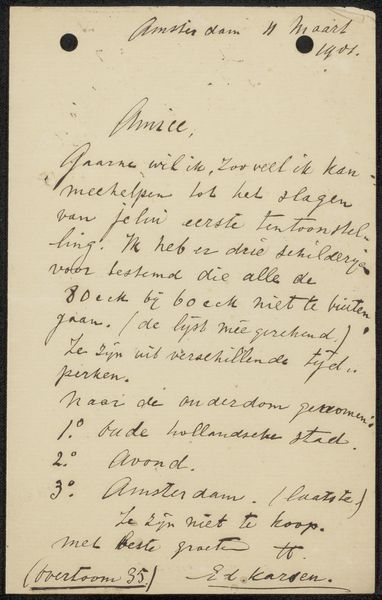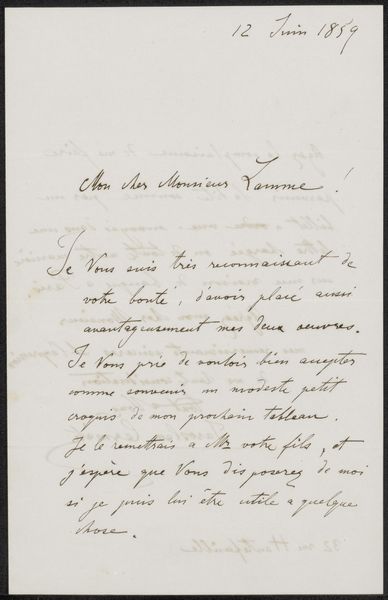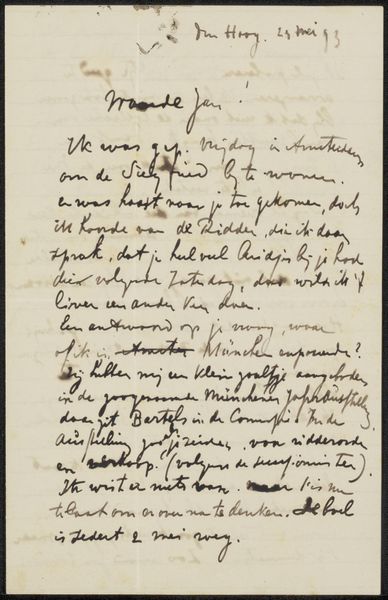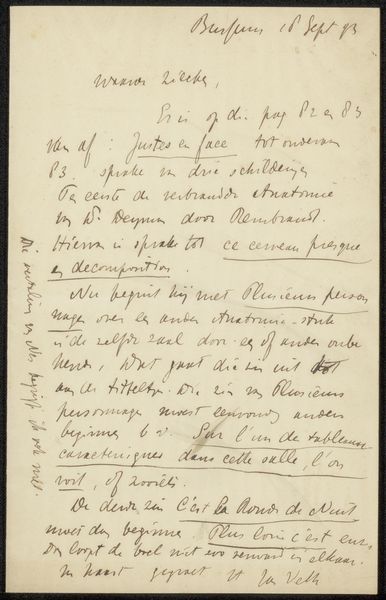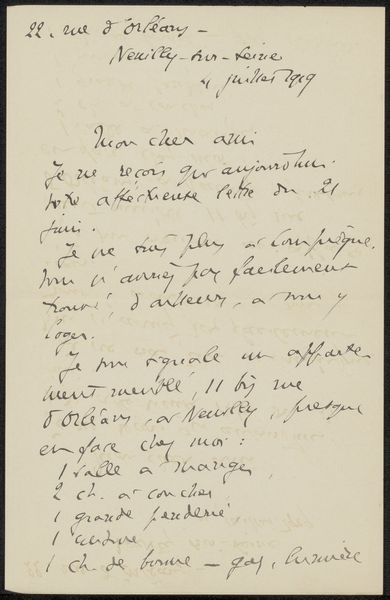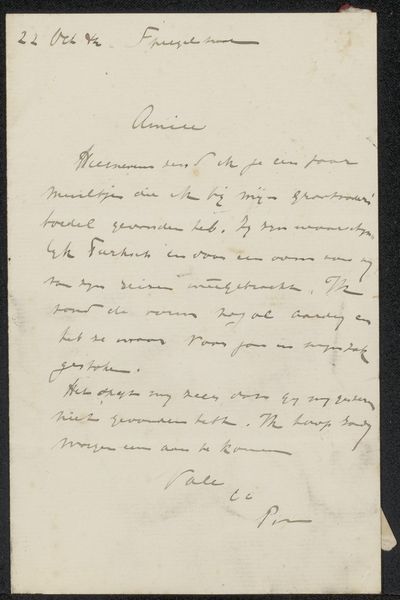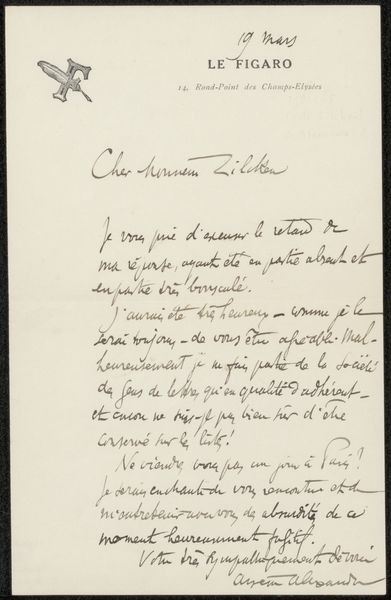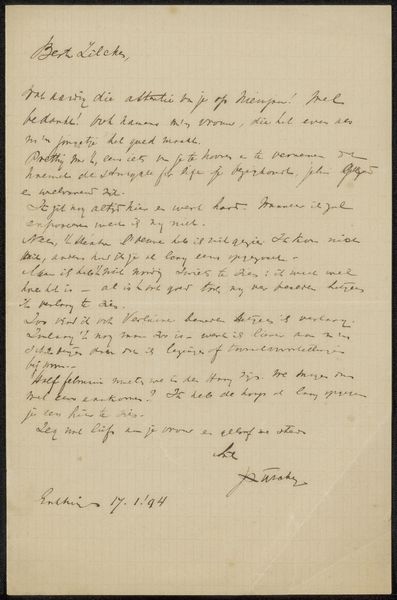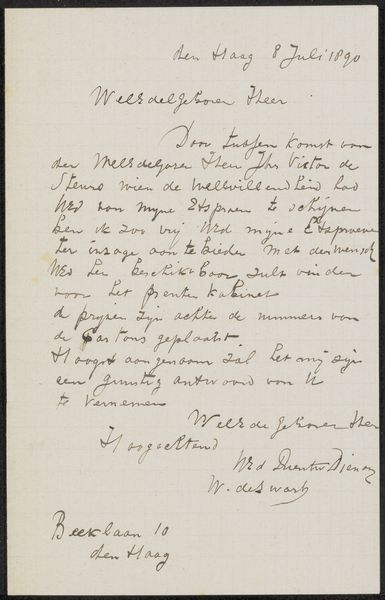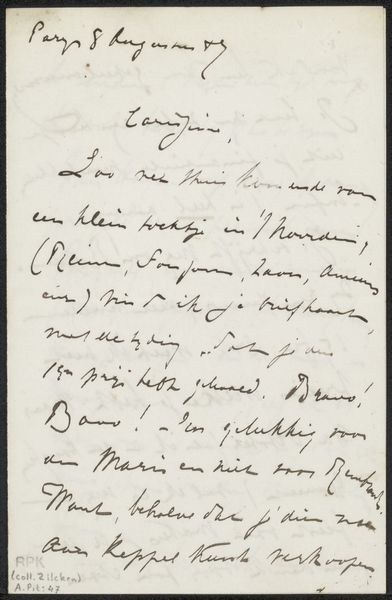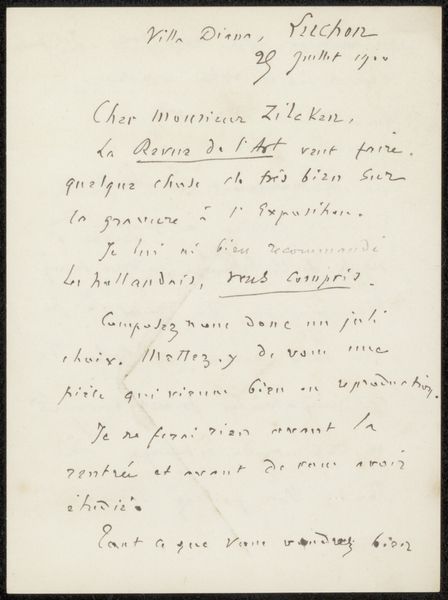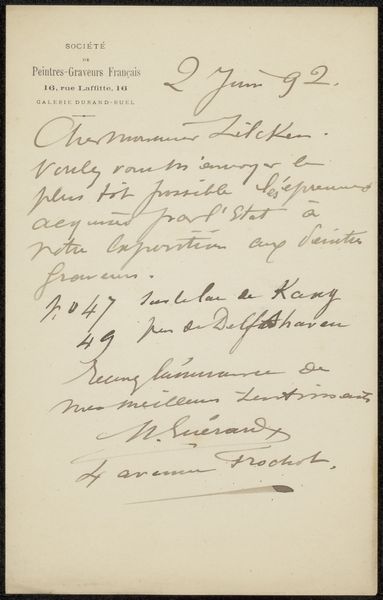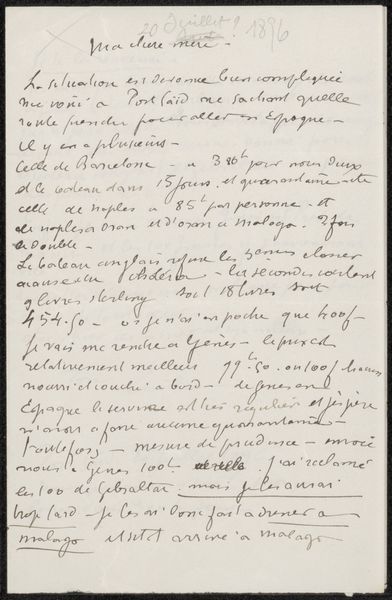
sculpture
#
pen and ink
#
ink drawing
#
pen sketch
#
hand drawn type
#
personal sketchbook
#
ink drawing experimentation
#
sculpture
#
pen-ink sketch
#
pen work
#
sketchbook drawing
#
sketchbook art
Copyright: Rijks Museum: Open Domain
Curator: Here we have Auguste Rodin’s “Brief aan Pieter Haverkorn van Rijsewijk,” likely created between 1900 and 1910, currently residing in the Rijksmuseum. It’s rendered in pen and ink. Editor: Immediately, what strikes me is the delicate interplay between the starkness of the ink and the pale surface—a fascinating dialogue of dark marks on this creamy ground. Curator: Indeed. Beyond its aesthetic qualities, consider the very act of writing, the pressure exerted on the pen, the way ink flows and pools. Rodin, primarily a sculptor, engages here in a different form of production. This isn’t just about transmitting words; it’s a record of labor and interaction, evident in the very stroke of the pen, sent to Pieter Haverkorn. Editor: But is it simply utilitarian? I'm drawn to the formal qualities of Rodin’s handwriting itself. Note the elegance of each stroke, a carefully calligraphic rendering of language, nearly divorced from the context of simple written communication. This is the line functioning autonomously, aesthetically. Curator: Yet, consider what he’s actually writing. Rodin discusses preparations "in view of Eve" as well as his upcoming exhibition. The text alludes to the practicalities of artistic production and display, to labor, to material concerns related to creating his sculptures; thus integrating art and daily life. Editor: And there is his name “Rodin” right at the top. Semiotically, his signature transforms into a visual mark, an abstract expression in itself. One recognizes Rodin not just through the content of the letter, but in this inscription too. Curator: For sure, the medium itself speaks of Rodin's methods. Pen and ink as accessible tools offering insights into the artist's broader artistic practice. We observe Rodin’s creative habits; not only do they record communication, but the physical circumstances that influence them. Editor: Agreed. What we see here really seems to show, that this piece bridges the gap between writing, drawing, sculpture and signature; thus enhancing our appreciation through focused observation of all materials included. Curator: Yes, providing us with valuable insight into the creative web behind the final sculptural products that the artist intended.
Comments
No comments
Be the first to comment and join the conversation on the ultimate creative platform.
